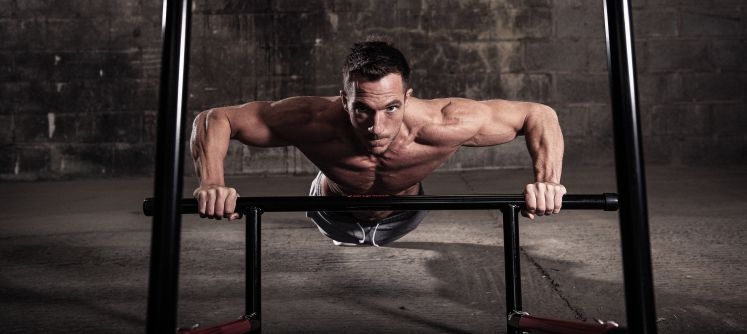Raising kids keeping you from the gym? Try building muscle from home instead.
Family life can get pretty crazy, especially for a new parent. But that doesn’t mean you have to throw your fitness out the window, says fitness expert Jarlo Ilano. Many men groan when they hear terms like ‘calisthenics’ or ‘functional training’. They picture a skinny, malnourished dweeb cranking out mindless push-up after push-up and never progressing in muscle and strength gains. But the opposite is actually true.
“When done correctly, progressive bodyweight exercises are not just for warm-ups or a placeholder substitute to lifting weights”, says fitness expert Jarlo Ilano from GMB Fitness. “They can build strength, muscle, and conditioning just as well, and in some cases even better, than going to the gym, and you can do the majority of it at home.”
With this in mind, we’ve put together a comprehensive quick start guide to working out from home in collaboration with GMB Fitness.
Why bodyweight training?
Moving your body around (as opposed to moving weights or machines around) lends itself to different types of strength, mobility, and coordination by virtue of how you move through space.
For instance, with pull-ups you are moving your body on a fixed bar versus pulling a bar down to yourself as you would on a machine. This creates a different stimulus for your body, using your arms, back, and abdominal muscles in a more coordinated and functional application of their strength, just as if you were climbing to pull yourself over an obstacle.
This type of training also can safeguard your body against injury and fix aching joints, even well into your later years. Even if you don’t want to ‘bulk up’, you can still keep your body running like a well-oiled machine, no matter how old you are.
Building muscle mass
Fundamental bodyweight exercises can be made more difficult by changing the leverages, angles, and rep tempos. These changes get your muscles to generate more force to complete the repetitions, and this will build muscle in the same way increasing weights on a barbell does. You can also progress to unilateral variations like one arm push-ups and one leg squats. The key is to make it progressive and keep pushing your body out its comfort zone.
Of course, nutrition is a vital component as always. The general recommendation is 0.8-1g of protein per kilogram of bodyweight, although the main thing is to be in a caloric surplus (eating more calories than your body uses).
Getting your family to join in
Training at home can encourage your children to exercise with you. This helps set an example for them, as they see you exercising and can’t help but want to join in. That’s a great thing, but be wary of forcing a regimen or a set schedule, or you’ll soon turn a fun activity into a chore. Bodyweight exercises are also generally considered safer for young children than weights – at least as a starting off point.
See if your partner wants to work out with you too. Bodyweight training can be scaled for any person’s goals. The many variations and types of exercises means they can be adapted for a person’s condition and what they want to achieve.
The role of weight training
If you’ve been weightlifting for a while and are considering a full switch to bodyweight workouts, it’s worth noting that your performance in those weightlifting exercises will decrease somewhat. But it’s not necessarily because you’re getting weaker. Weightlifting is a skill like any other, and as with skills that don’t get used, our body stops being as effective in performing them.
If you have favourite lifting exercises that you want to maintain, this can easily be done by a few hard sets done every two weeks. Maintaining strength and condition is much easier than what it took to gain. Of course, bodyweight exercises are a great addition to an existing weightlifting program, so it depends on your goals. Either way, working out at home will make your life as a parent much easier, especially when workouts are short and intense.
For sample routines you can do in the comfort of your own home click here








